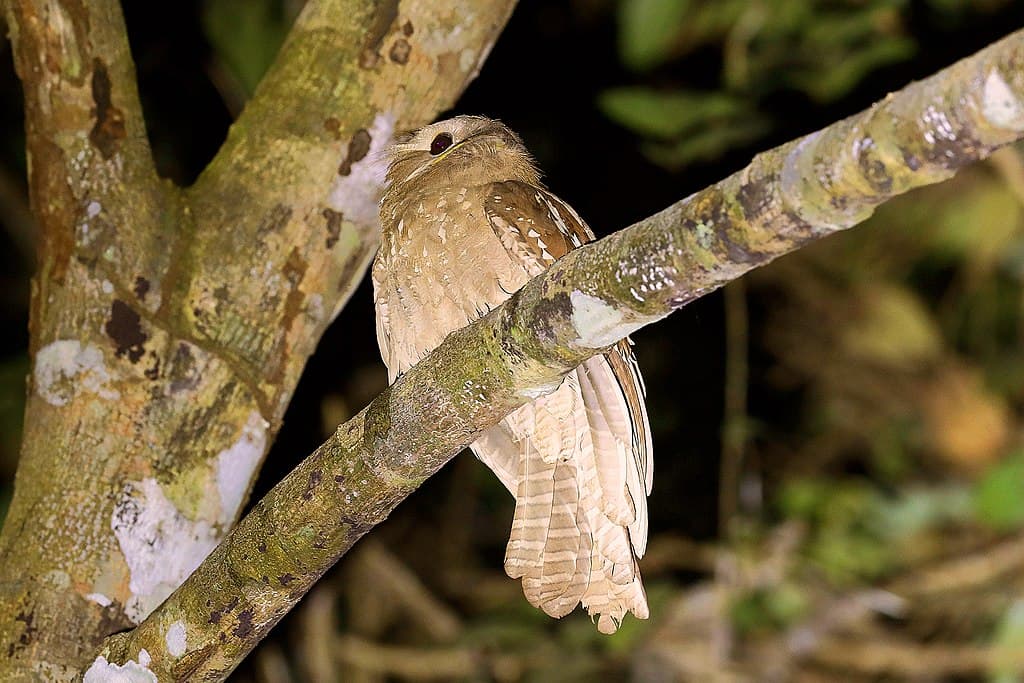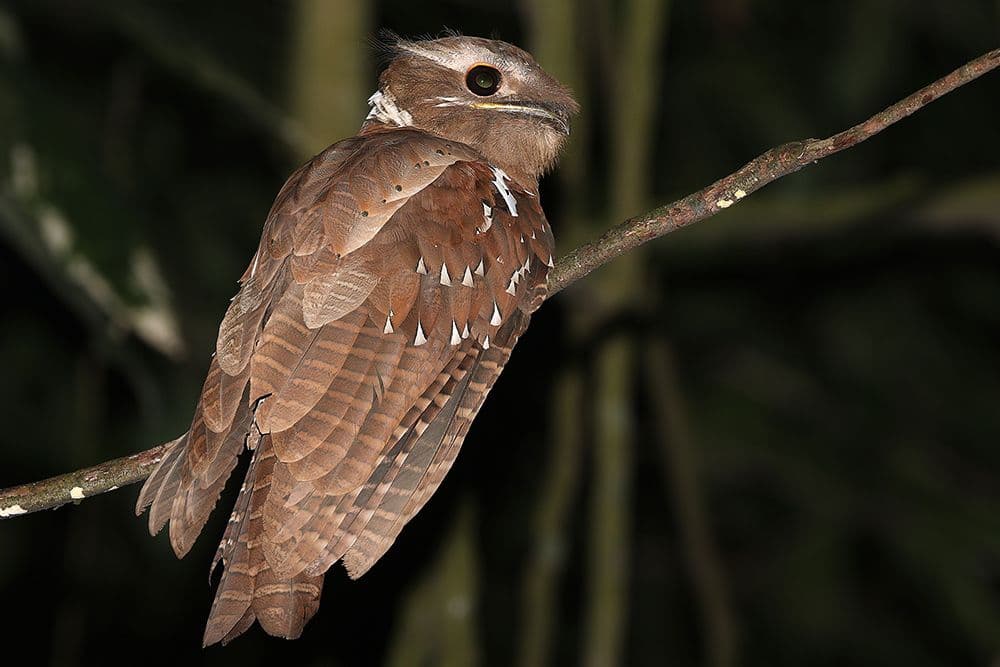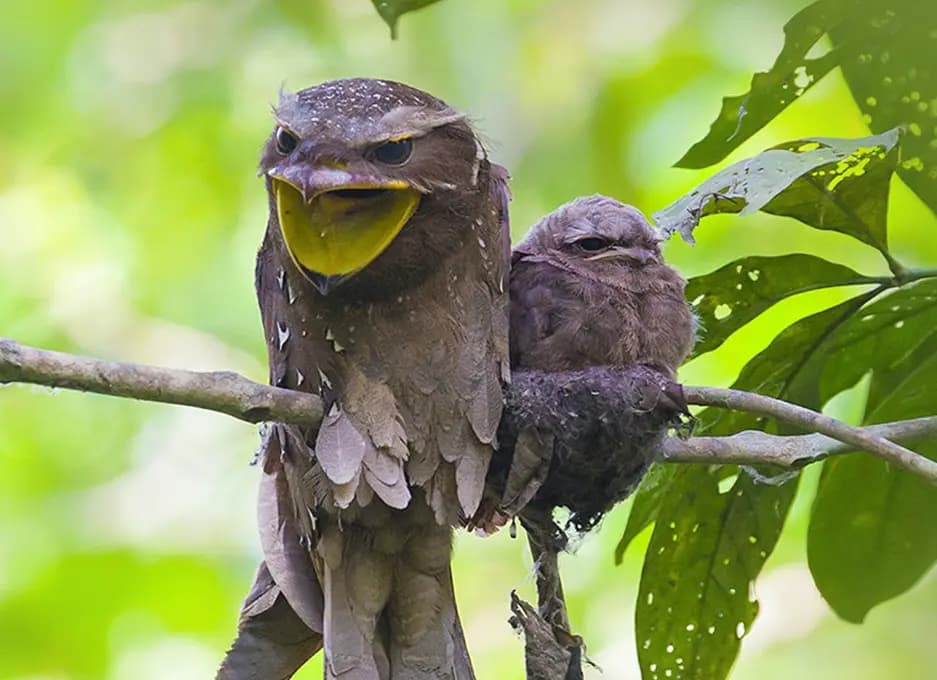Looking similar to an owl but not, a large frogmouth is an interesting bird that not many people know of. Today, we are going to find out a bit more about this relative of the hummingbird and owlet-nightjar. You probably won’t expect such relation with the appearance of these birds but it is true. Let’s take a look and see some more information about large frogmouths below.
Appearance

At a length of 42 centimeters, large frogmouths are quite large birds. Adults have chestnut and blackish-brown upperparts that are barred and spotted with buff and white. The underparts of the birds are dull brown or pale rufous, and their belly is paler than their breast. A large frogmouth has a small beak that is horn-colored with a darker tip, and its gape is yellow. As for the tiny feet of the bird, they are dull yellow. This bird has a jagged shape, and their brown feathers allow them to camouflage really well in their surroundings. And guess how it got its name. Clearly from the mouth of the bird that looks like a frog’s mouth. The gape of a large frogmouth is broad and frog-like, and it also has slightly hooked and substantial bills.
Behavior

Being nocturnal, large frogmouths hunt at night and roost during the day. They hunt on the ground and in the canopy, and they perch on a branch or hide in a hole when they roost. When resting, a large frogmouth is known to lie on the branches of trees in the forests. Large frogmouths either live in pairs or solitary on a tree branch in the daytime.
Apart from hunting, these birds also sing at night as well but the songs are rather not enjoyable. Their voice is often described as repeated “deep hollow-sounding tremolo” or as a “series of 4 to 8 loud liquid trill”. Large frogmouths usually sing from a perch in a tree, and hearing that at night can be pretty eerie.
Feeding & Habitats

Not different from other night birds, these ones also feed on insects such as cicadas and grasshoppers. At the same time, they also dine on mice, small lizards, and spiders that they can find. Large frogmouths occur in some Southeast Asian countries including Brunei, Cambodia, Indonesia, Malaysia, and Thailand. Their habitats are primary lowland forests and secondary forests as well as tropical and subtropical moist lowland forests. However, their habitats are threatened which affects their population greatly. Unfortunately, their status on the IUCN Red List is currently Near Threatened due to habitat degradation and habitat loss.
Related Post: Owl Species In Cambodia
